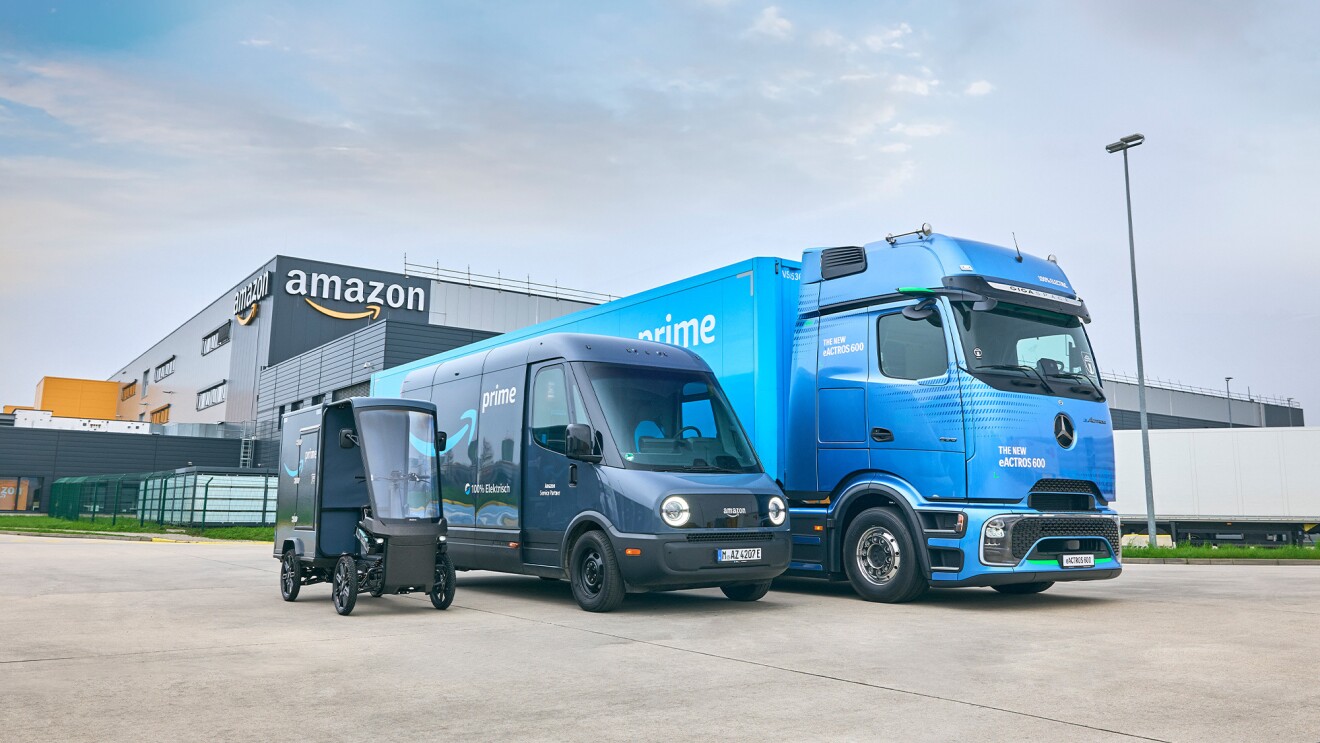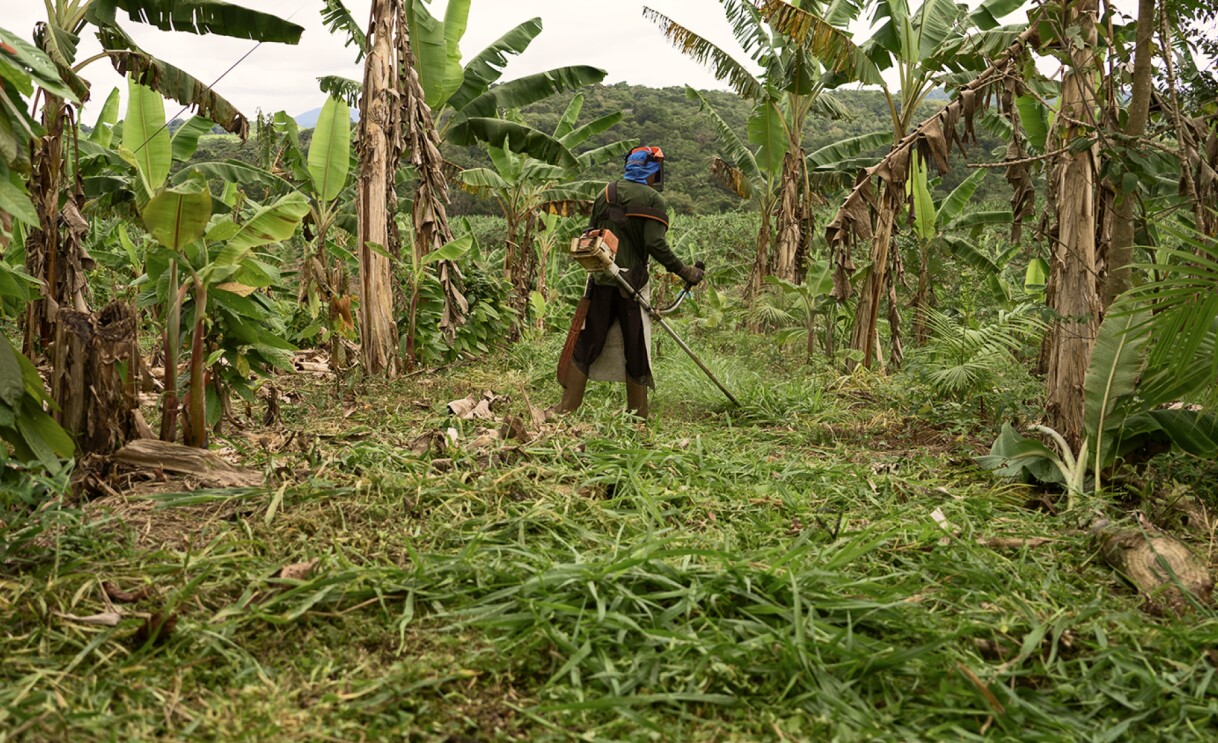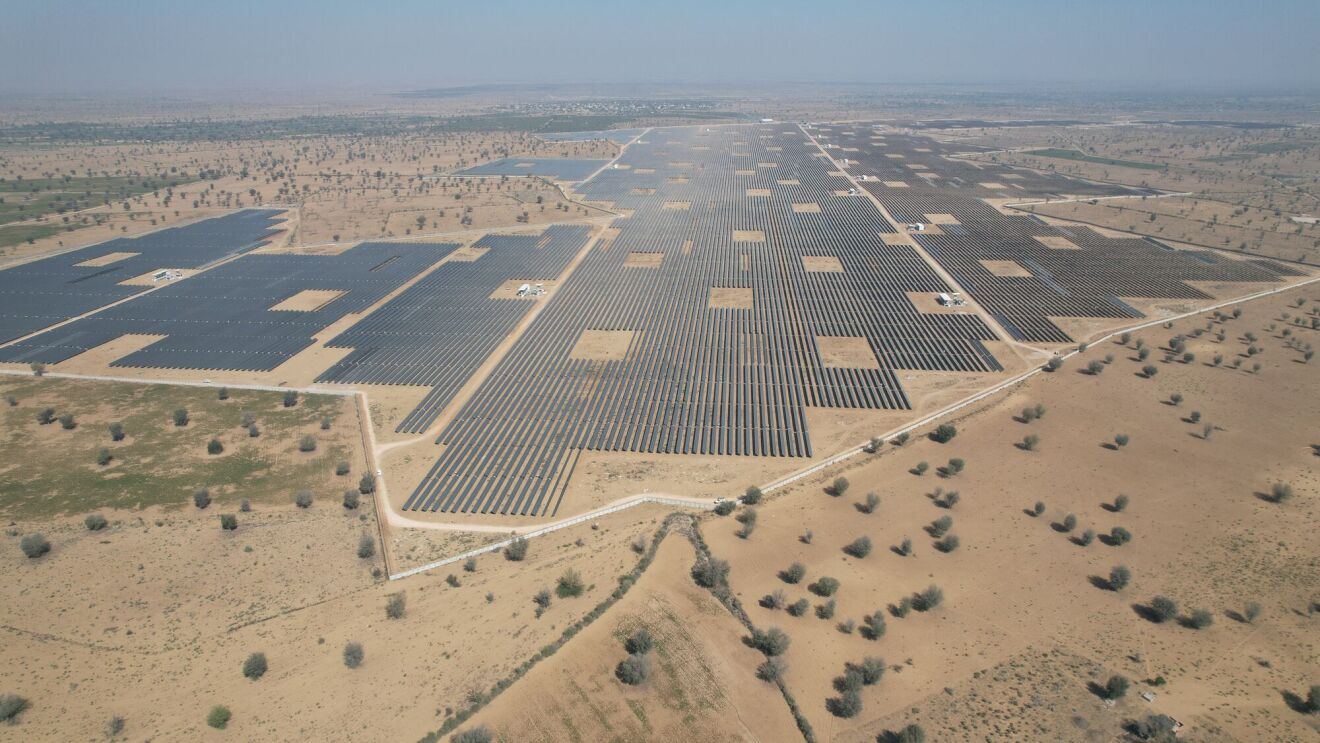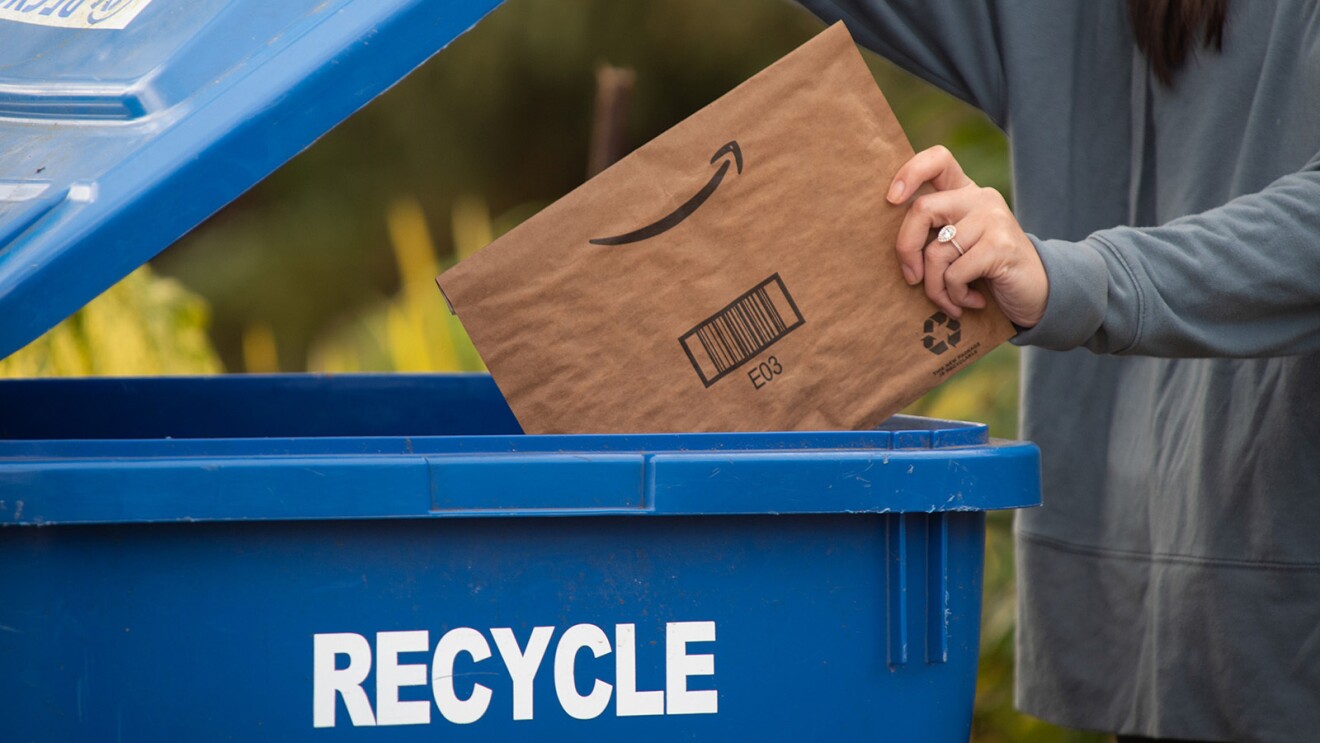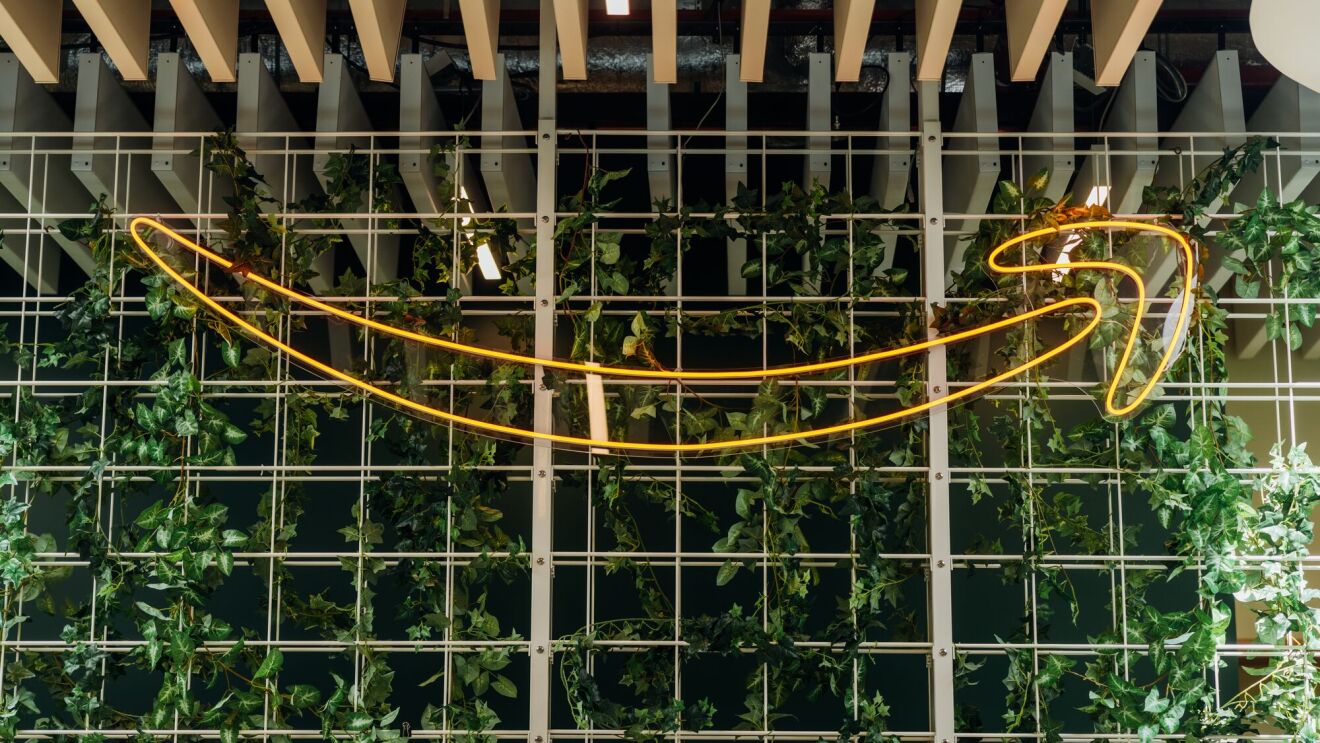Page overview
Powering our operations by renewable energy with new wind and solar farms

We are on a path to powering our operations with 100% renewable energy, and we’re on track to do this by 2025, five years ahead of schedule. In 2022, 90% of electricity consumed by Amazon was powered by renewable energy sources, thanks to more than 400 wind and solar projects around the world. In addition to wind and solar electricity, we’re also investing and innovating in new energy technologies like green hydrogen. Through the Climate Pledge Fund, we’re working with companies like Electric Hydrogen and Sunfire to improve energy generation, storage, and utilization.
In 2022, we had more than 9,000 electric delivery vehicles in our global fleet, and 145 million packages were delivered by EVs in the U.S. and Europe. Our goal is to get 100,000 electric delivery vehicles from Rivian on the road by 2030. Today, we have more than 5,000 vehicles operating in the U.S. and recently announced the first 300 to hit the road in Germany.
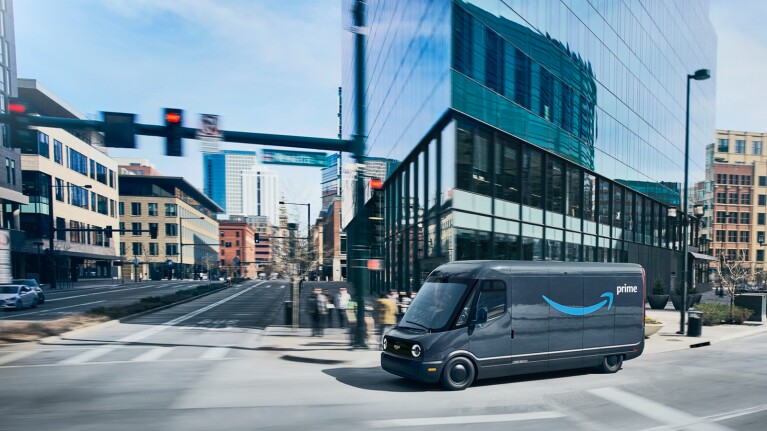
We’re also investing in sustainable logistics technologies and have more than 15,000 hydrogen-powered forklifts operating in our fulfillment centers in North America. In 2022, we signed a deal for enough green hydrogen to fuel 40,000 forklifts annually by 2025. We also deployed e-cargo bikes, scooters, and on-foot deliveries from micromobility hubs, including in New York City’s Manhattan and in 20 cities across Europe—from London and Paris to Marseille and Munich.
We’re continuously improving our packaging for customers, using machine learning to minimize excess waste and single-use plastic. In 2022, we decreased single-use plastic by 11.6% across our global operations by expanding paper-based packaging, and continuing to use lighter and more-flexible packaging. Where possible, we also eliminate packaging altogether. In 2022, 11 percent of all packages shipped globally were without added Amazon delivery packaging.

Smaller and lighter packages take up less space during transport, and result in fewer carbon emissions in delivery. Since 2015, we’ve reduced the average weight of packaging per shipment by 41%, avoiding more than 2 million tons of material waste—the weight of 230 Space Needles, the iconic landmark in our hometown of Seattle.

Reaching net-zero carbon by 2040 requires Amazon to reduce its carbon footprint across our entire business, including our vast global supply chain. Like many companies our size, this is challenging, as these are activities that take place outside our direct operational control. We know that to decrease our carbon footprint, we must work with our supply chain partners to help them decarbonize their own operations. Beginning in 2024, we’re updating our Supply Chain Standards to require suppliers to share their carbon emissions data with us and set carbon goals. We’ll use our scale, investment, and innovation to provide tools and resources to help them reach their goals—whether that’s transitioning to renewable energy or accessing more sustainable materials.
Amazon is a high-growth company, and a decreasing carbon intensity indicates that we’re successfully decoupling our emissions growth from the growth of our business. Our carbon intensity decreased 7% in 2022, while our business continued to grow. The carbon intensity metric allows us to measure how our carbon footprint is changing relative to the growth of the business.
Our total carbon footprint also decreased by 0.4% in 2022 as a result of our renewable energy investments, as well as a decrease in emissions from building construction and third-party transportation.
AWS is designing data centers, including servers and hardware, for efficiency, resiliency, and a lower carbon footprint. Research shows that AWS can lower customers’ workload carbon footprints by nearly 80% compared to on-premises computing workloads and lower workloads up to 96% once AWS is powered with 100% renewable energy.

AWS also announced it will be water positive by 2030, returning more water to communities and the environment than we use in our direct operations.
Customers want products that align with their values, including sustainability. Our Climate Pledge Friendly (CPF) program helps customers identify products that are vetted by one or more trusted third-party sustainability certifiers as well as our own. In 2022, we more than doubled the number of CPF products available, and today, customers can shop from more than 550,000 CPF products. This same year, we shipped more than 800 million CPF-certified products, and the program now includes more than 50 certifications.
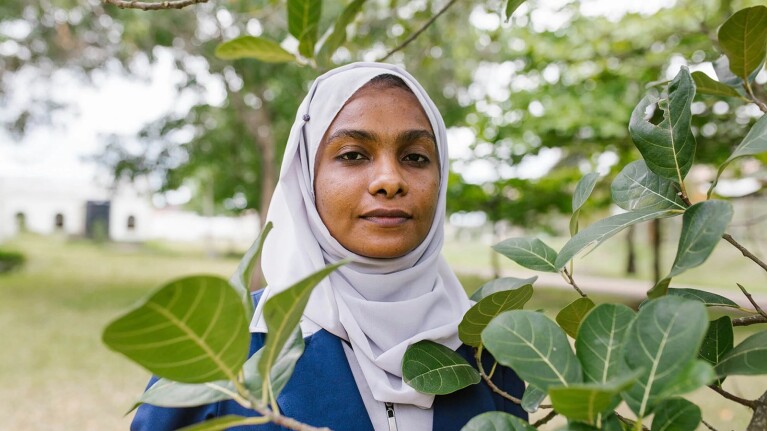
People are critical to the success of our business, and Amazon is committed to treating our employees, and the people connected to our entire value chain, with fundamental dignity and respect. In 2022, we committed $3 million to the U.S. Agency for International Development (USAID) Climate Gender Equity Fund to address inequities that exist for women in the climate finance ecosystem. We also support female entrepreneurs with the resources they need to develop climate change innovations.
Operating a diverse supply chain brings innovation, economic growth, and it’s the right thing for society as a whole. In 2022, we focused on building and strengthening our supplier diversity and inclusion (SDI) processes, technologies, and partnerships. We spent $3.3 billion with 375 certified diverse suppliers, and hosted in-person events designed to meet diverse and small business owners across the U.S.
The Path Forward
Trending news and stories
- Amazon Pet Day 2025 is coming May 13-14 with 48 hours of deals on pet products and supplies
- LinkedIn names Amazon a top US company where people want to work for the eighth year in a row
- CEO Andy Jassy’s 2024 Letter to Shareholders
- AWS is first major cloud provider to deliver Mistral AI’s Pixtral Large as a fully managed, serverless model




